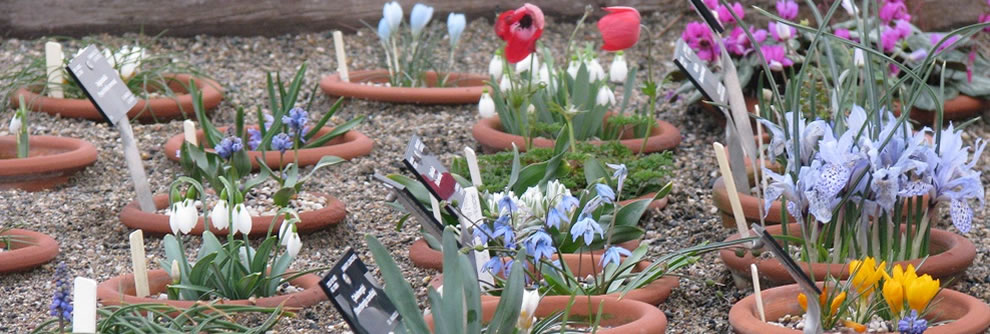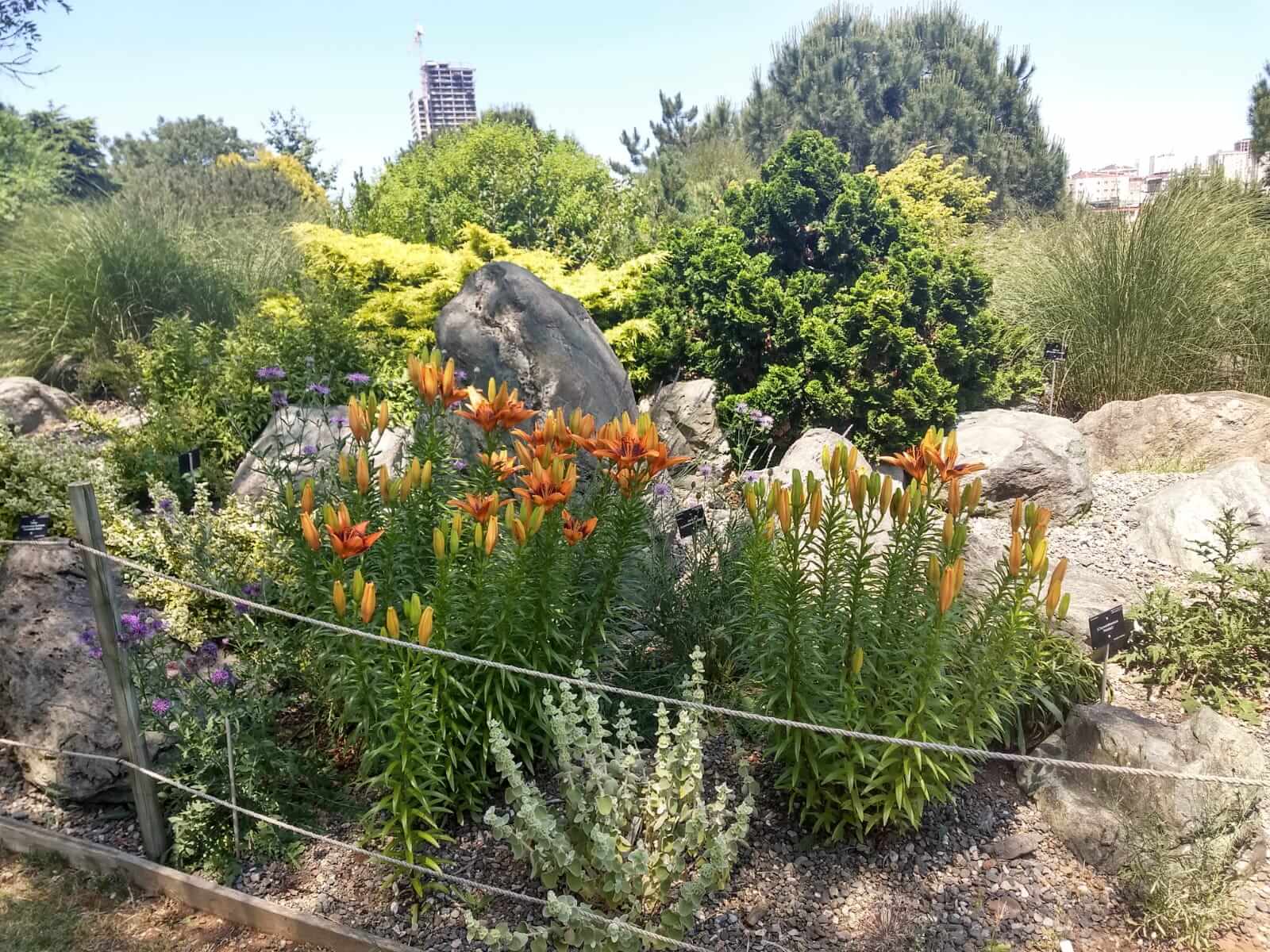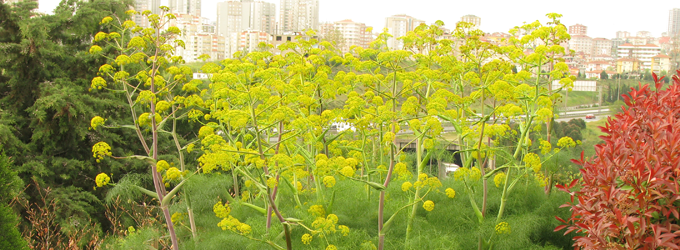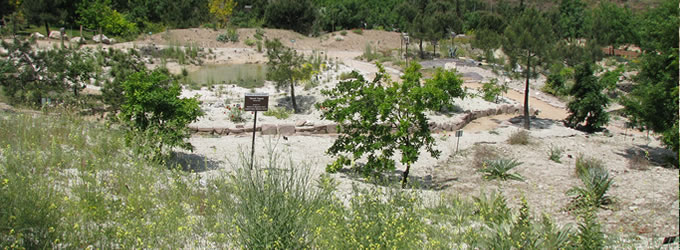Central Island
Central Island
Central Island was the first part of Nezahat Gökyiğit Botanic Bahçe to be developed and was officially opened in 2002, It has the administration offices, together with library, teaching facility, herbarium and botanical illustrators studio.
The main entrance gate opens directly into Central Island from the motorway and is only for the use of staff and visitors who come for a specific purpose. Other visitors should use the Ataşehir pedestrian or the and Ümraniye entrance, which has parking facilities. The number of visitors to NGBB continues to rise with over 200,000 per year

Geophyte Section
The Geophyte Collection is one of NGBB’s most important collections. The plants are grown in pots plunged into sand in 34 raised beds constructed from wooden recycled railway sleepers. Currently the collection consists of approximately 3000 pots representing over 400 taxa. To protect the plants from birds the beds are covered by netting supported over metal hoops. This which can be rolled open when required

Rock Garden
The first rock garden was created in 2002 using serpentine or limestone stone and an area of scree.

Hedge Garden
Seven different species have been used to show examples of hedging plants. Planted in the beds between the hedges are several herbaceous species, including Centaurea tchihatcheffii, a threatened red flowered napweed species endemic to Turkey and known only from Turkey’s Ankara province.

Arid and Saline Garden
The Arid and Saline Garden at NGBB was established in 2007 to grow xerophyte and halophyte species which are adapted to grow in several different arid habitats and saline soils.
Cactus and Succulent greenhouse
This is situated between the Arid and Saline Garden and the Children’s Gardening area. It is used for the propagation and display of cacti and succulents and the greenhouse is heated during the winter. Many of the cacti and succulents have been kindly donated by Ediz Hun from his private collection.
Crevice Garden
Many plant species grow in rocky often high altitudes where they are protected from gazing animals by growing in rock crevices. The recently constructed Crevice garden aims to recreate this habitat at the same time providing very good drainage and the rock give protection to the root systems from fluctuating temperatures. Currently there are representatives from 145 taxa of mostly Turkish natives.
